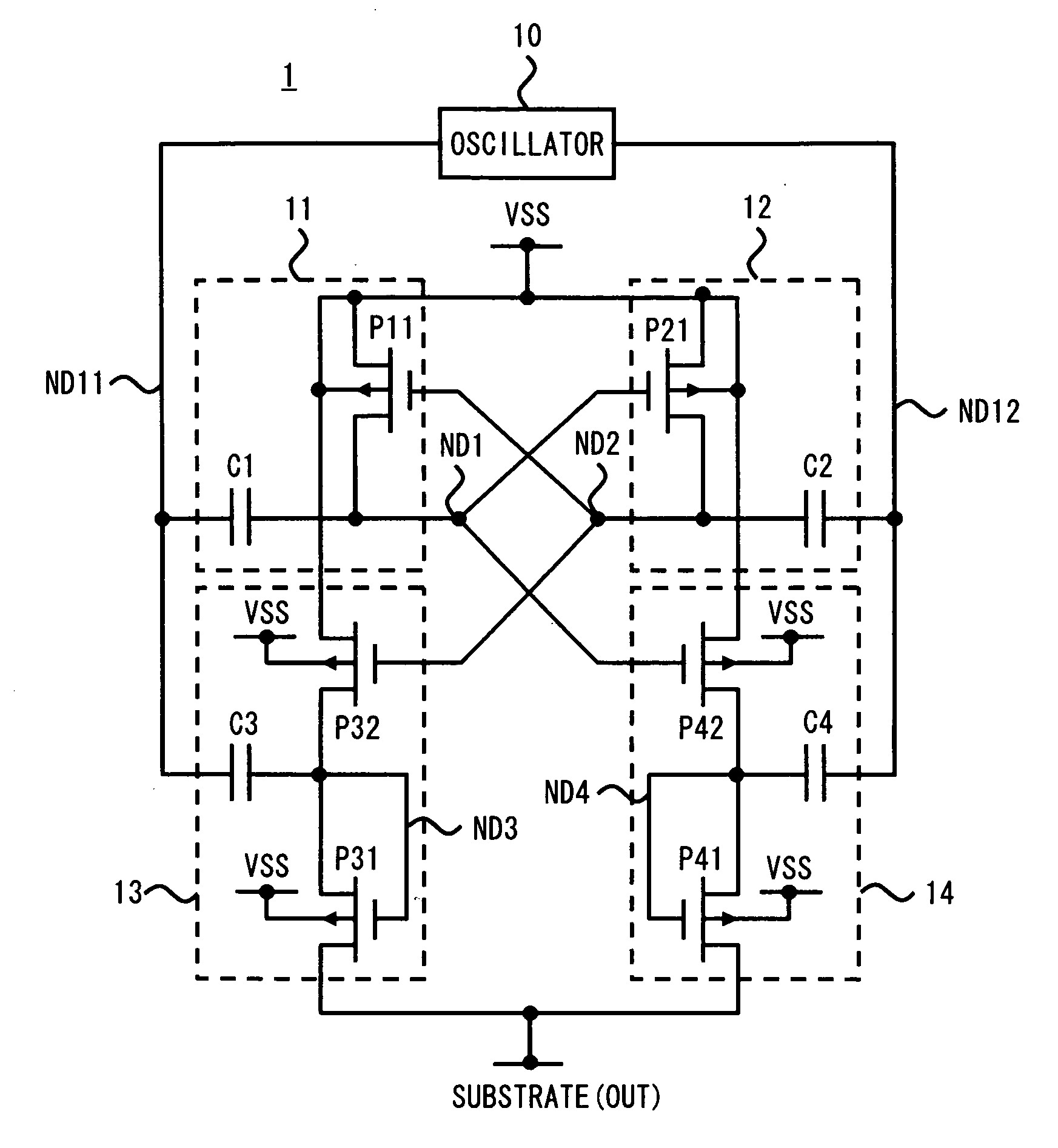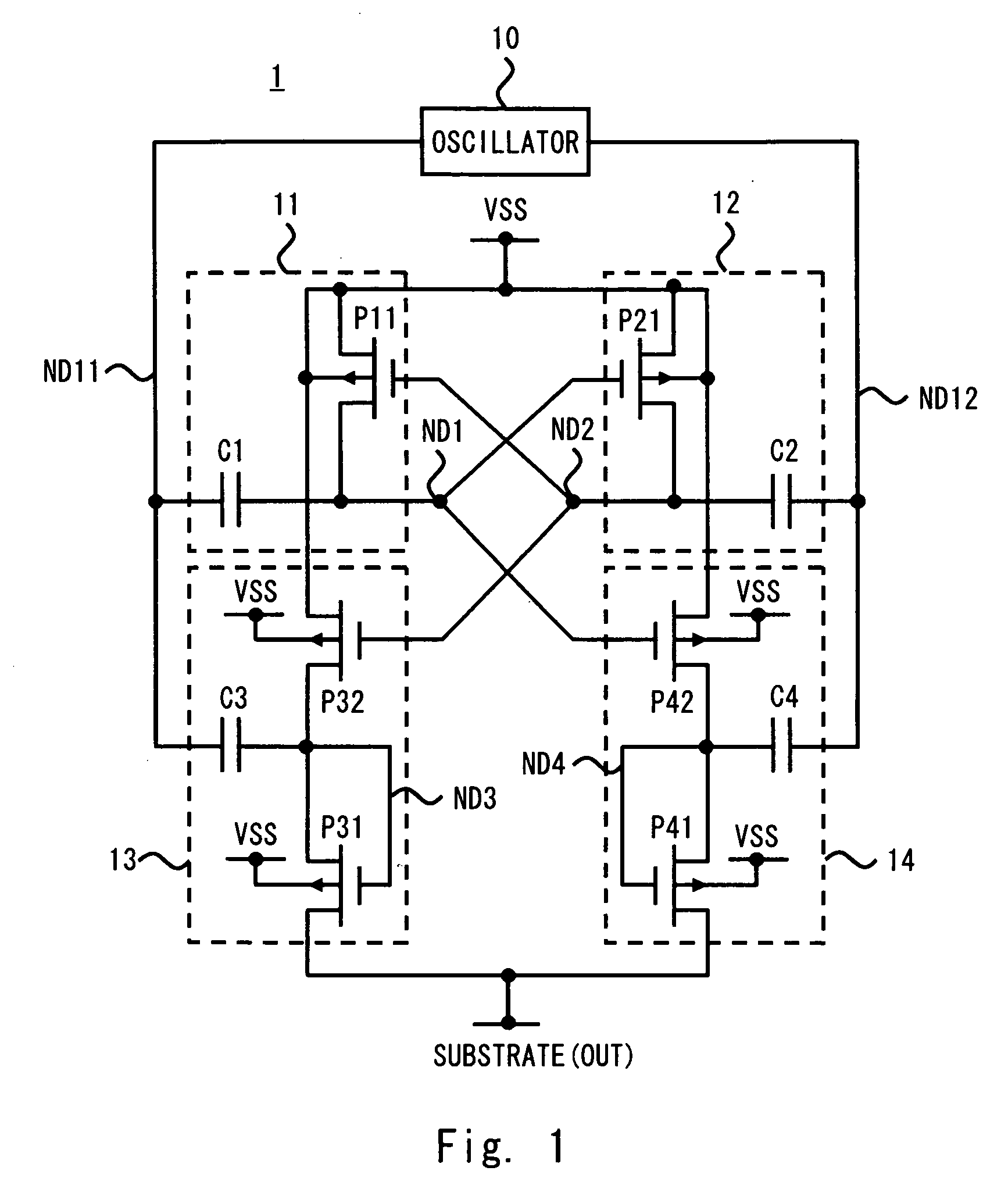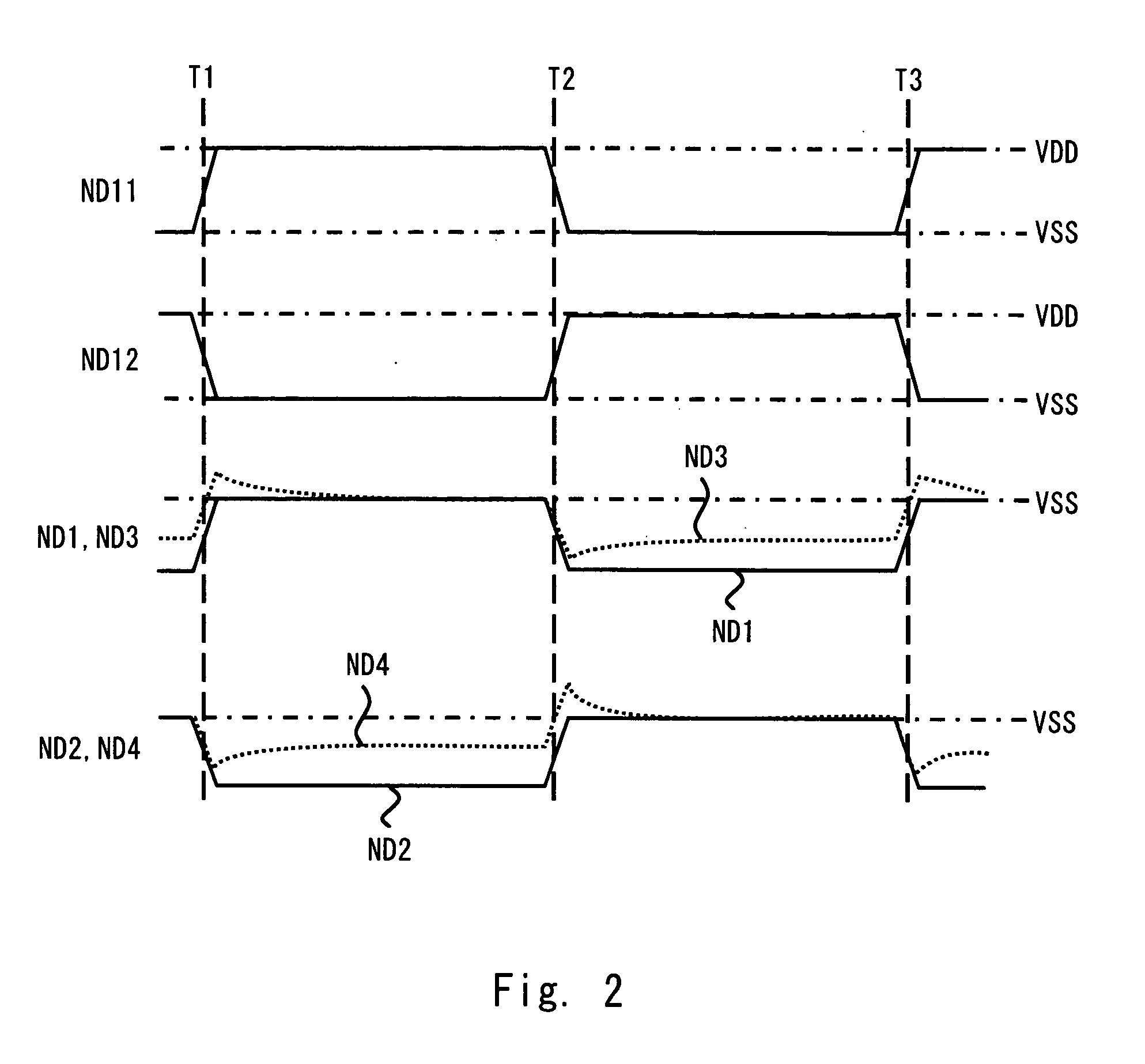Semiconductor device
a technology of semiconductor devices and capacitors, applied in the direction of instruments, machines without intermediate ac conversion, process and machine control, etc., can solve the problems of reduced current driving capability, so as to prevent a reduction in current driving capability and increase the circuit area.
- Summary
- Abstract
- Description
- Claims
- Application Information
AI Technical Summary
Benefits of technology
Problems solved by technology
Method used
Image
Examples
first exemplary embodiment
[0026]Exemplary embodiments of the present invention will be described below with reference to the accompanying drawings. FIG. 1 shows a circuit diagram of a charge pump circuit 1 provided in a semiconductor device according to a first exemplary embodiment of the present invention. As shown in FIG. 1, the charge pump circuit 1 includes an oscillator 10, a first charge pump circuit 11, a second charge pump circuit 12, a third charge pump circuit 13, and a fourth charge pump circuit 14. The charge pump circuit 1 uses a ground voltage VSS which is supplied as a reference voltage from a reference voltage terminal. Further, the charge pump circuit 1 generates a voltage for a substrate region of the semiconductor device in which the charge pump circuit is formed. That is, in the charge pump circuit 1, the substrate region of the semiconductor device corresponds to an output terminal. Assume that the charge pump circuit 1 outputs a voltage (negative voltage), which is lower than the refere...
second exemplary embodiment
[0043]FIG. 3 shows a circuit diagram of a charge pump circuit 2 according to a second exemplary embodiment of the present invention. As shown in FIG. 3, the charge pump circuit 2 has a configuration in which the first and second rectifier elements of the charge pump circuit 1 according to the first exemplary embodiment are implemented using NMOS transistors. In the charge pump circuit 2 according to the second exemplary embodiment, an NMOS transistor N31 is used as the first rectifier element, and an NMOS transistor N41 is used as the second rectifier element.
[0044]The NMOS transistor N31 has a source (terminal connected to a backgate terminal) connected to the substrate region, a drain connected to the third pumping node ND3, and a gate connected to the second pumping node ND2. That is, the conductive state of the NMOS transistor N31 is controlled by the second control signal. The NMOS transistor N41 has a source (terminal connected to a backgate terminal) connected to the substrat...
third exemplary embodiment
[Third exemplary embodiment]
[0047]FIG. 4 shows a circuit diagram of a charge pump circuit 3 according to a third exemplary embodiment of the present invention. The charge pump circuit 3 is a positive-voltage charge pump and shown as a modified example of the charge pump circuit 2. As shown in FIG. 4, the output terminal of the charge pump circuit 3 is connected not to the substrate region but to a circuit (not shown) of a power supply destination, for example. Further, a power supply terminal is used as the reference voltage terminal, and a power supply voltage VDD is supplied as the reference voltage. Furthermore, in the charge pump circuit 3, NMOS transistors are used as the first to fourth drive transistors, and PMOS transistors are used as the rectifier elements. Referring to FIG. 4, an NMOS transistor N11 is illustrated as the first drive transistor, an NMOS transistor N21 is illustrated as the second drive transistor, an NMOS transistor N32 is illustrated as the third drive tr...
PUM
 Login to View More
Login to View More Abstract
Description
Claims
Application Information
 Login to View More
Login to View More - R&D
- Intellectual Property
- Life Sciences
- Materials
- Tech Scout
- Unparalleled Data Quality
- Higher Quality Content
- 60% Fewer Hallucinations
Browse by: Latest US Patents, China's latest patents, Technical Efficacy Thesaurus, Application Domain, Technology Topic, Popular Technical Reports.
© 2025 PatSnap. All rights reserved.Legal|Privacy policy|Modern Slavery Act Transparency Statement|Sitemap|About US| Contact US: help@patsnap.com



